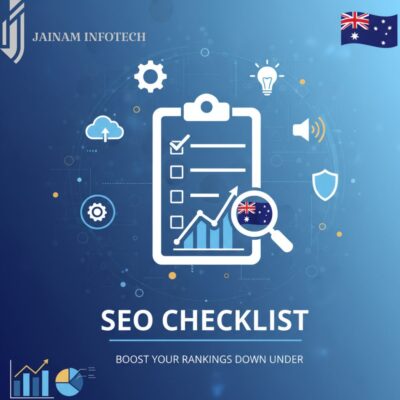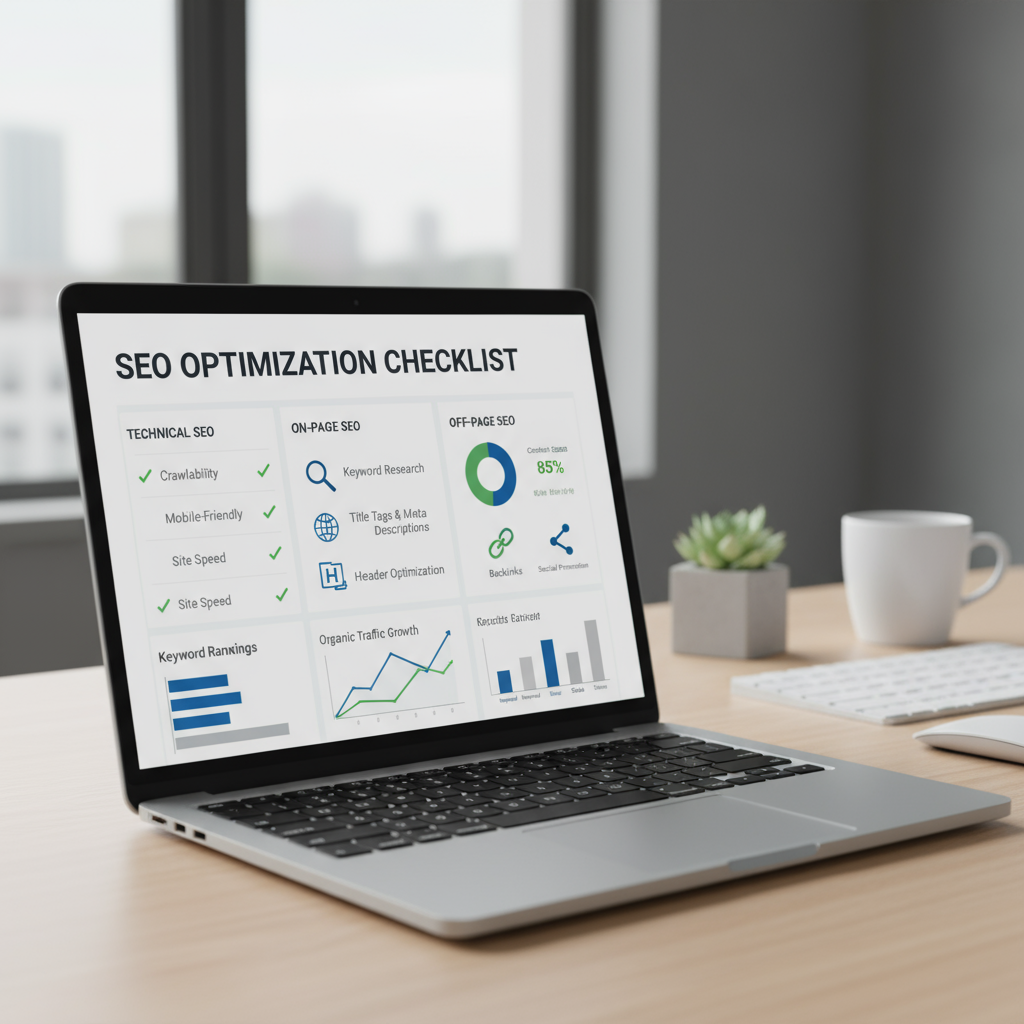
In 2025, mastering On-Page SEO is crucial for Australian businesses aiming to enhance their search engine rankings and attract more local traffic. The right SEO Checklist helps you optimize every webpage element, ensuring your site stands out in competitive search results. This blog will guide you step-by-step through the latest On-Page SEO strategies with key changes and additions tailored for the Australian market.
What Is On-Page SEO and Why It Matters
On-Page SEO involves optimizing individual web pages to improve their visibility and relevance on search engines like Google. Unlike off-page SEO, which relies on external signals such as backlinks, On-Page SEO is fully within your control. It focuses on refining content, meta tags, URLs, headings, images, internal linking, and overall user experience.
An effective On-Page SEO approach ensures that your website speaks clearly to both search engines and users, boosting your chances of ranking higher on the Search Engine Results Pages (SERPs) and attracting quality traffic.

Key Changes and Additions in On-Page SEO for 2025
The SEO landscape evolves rapidly, and 2025 brings new priorities and techniques:
- User Intent Focus: Search engines increasingly prioritize content that aligns with the true intent behind users’ queries, emphasizing value over keyword stuffing.
- Core Web Vitals: Google emphasizes loading speed, interactivity, and visual stability as ranking signals, making site speed and seamless UX essential.
- Mobile-First Indexing: With mobile traffic dominant, sites must be fully responsive and fast on mobile devices.
- Schema Markup Expansion: Structured data implementation now covers more content types, enhancing appearance in rich snippets and local search features.
- AI and NLP Understanding: Content should reflect natural language and answer broad user questions with clarity and depth.
- Sustainability & Accessibility: Search engines reward accessible websites that serve all users, including those with disabilities.
- Local SEO Optimization: For the Australian market, targeting location-based keywords and local business schema is critical.
Essential On-Page SEO Checklist for 2025
1. Keyword Research and Mapping
Begin with comprehensive keyword research tailored for the Australian market using tools like Google Keyword Planner, SEMrush, or Ahrefs. Identify primary and related keywords reflecting user intent, including transactional, informational, and navigational queries. Map these keywords logically across your site pages to avoid overlap.
2. Optimize Title Tags
Your title tag is a primary ranking factor and search result headline. Include your target keyword SEO Checklist or On-Page SEO near the beginning of the title. Keep titles concise (under 60 characters) and compelling to increase click-through rates.
3. Write Effective Meta Descriptions
Meta descriptions should be unique, engaging, and include the main keyword naturally. Though not a direct ranking factor, meta descriptions influence click-throughs by concisely summarizing page content (150-165 characters recommended).
4. Use Header Tags Strategically
Structure content with one H1 containing the primary keyword. Use H2s and H3s for subtopics and relevant secondary keywords. Proper header hierarchy improves readability and helps search engines understand content context.
5. SEO-Friendly URLs
Create short, descriptive URLs incorporating your target keyword. Use hyphens to separate words and avoid numbers or special characters. Example: /seo-checklist-2025 is preferred over /page?id=123.
6. High-Quality, User-Centric Content
2025’s SEO Checklist prioritizes content that answers user questions fully and naturally incorporates target keywords. Write engaging, informative content tailored to Australian users, including local references when appropriate.
7. Optimize Images
Use descriptive filenames and keyword-rich alt text to aid SEO and accessibility. Compress images to improve page loading speed and specify image dimensions to prevent layout shifts.
8. Enhance User Experience and Mobile Responsiveness
Ensure your website is fully responsive and fast-loading on all devices. Google’s Core Web Vitals focus on Largest Contentful Paint (LCP), First Input Delay (FID), and Cumulative Layout Shift (CLS) metrics — optimize accordingly to meet thresholds.
9. Internal Linking
Build a logical internal linking structure using descriptive anchor text. Link to relevant pages to distribute link equity and guide users through your site, improving dwell time and SEO signals.
10. Implement Schema Markup
Use structured data like LocalBusiness, FAQPage, and Breadcrumb schemas to help Google better understand your content and display rich results. Tailoring schema to Australian business specifics boosts local SEO effectiveness.
11. Monitor and Adjust Regularly
SEO is ongoing. Use tools like Google Search Console and Google Analytics to track performance. Adjust keywords, update content, fix broken links, and refine technical elements as needed.
On-Page SEO Checklist: Before and After Publishing
Pre-Publishing:
- Conduct keyword research
- Create well-structured content
- Optimize title tags, meta descriptions, URLs
- Add appropriate header tags and alt text
- Ensure schema markup is in place
- Test page speed and responsiveness
Post-Publishing:
- Monitor rankings and user metrics
- Adjust content and keywords based on performance
- Build internal links to new content
- Update schema and metadata as needed
- Regularly check for technical issues and broken links

Trending FAQ Section on SEO Checklist and On-Page SEO
What is an SEO Checklist, and why is it important in 2025?
An SEO Checklist is a step-by-step guide to optimize your website for search engines effectively. In 2025, following this is crucial to keep pace with evolving algorithms and user expectations, especially focusing on user intent, page experience, and local SEO for markets like Australia.
How does On-Page SEO differ from Off-Page SEO?
On-Page SEO involves optimizing content and HTML elements on your website to improve rankings. Off-Page SEO refers to external actions like backlinks and social signals. Both are essential, but On-Page SEO gives you direct control over how search engines view your site.
What are Core Web Vitals, and how do they affect rankings?
Core Web Vitals measure page loading speed (LCP), interactivity (FID), and visual stability (CLS). They impact user experience significantly, influencing your site’s ranking in Google search results.
How can I optimize my website specifically for Australian users?
Incorporate Australian English keywords, use local schema, add geo-specific content, and target local search queries. Ensure mobile responsiveness and fast loading speeds to meet the expectations of Australian audiences.
How often should I update my On-Page SEO?
Regular updates are essential. Review your content and SEO elements at least quarterly to adjust for new trends, algorithm changes, and evolving search behavior.
Conclusion: Take Control of Your Site’s SEO in 2025
The On-Page SEO landscape in 2025 demands a strategic approach that balances technical precision with user-centric content. Adopting a comprehensive SEO Checklist tailored to Australian specifics will boost rankings, enhance local visibility, and drive meaningful website traffic instantly.
Start implementing these essential on-page optimizations today and watch your site’s search performance soar. For expert SEO services crafted for the Australian market, visit Jainam Infotech’s SEO services and leverage industry-leading strategies to achieve your digital growth goals.